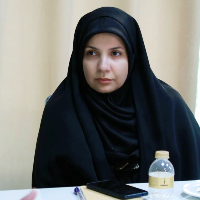Analysis of Policy-Making in Cultural Economics
According to the prevailing approach to development, the path of growth at its various micro and macro levels has been made through the production of and focus on high value-added industries like cultural industries in recent decades.According to UNESCO, cultural economics is a very strategic industry in the national economy in most developed countries in the world and governments have played an important role in it. Policy-making in the process of production, distribution, and consumption of cultural products is one of the most well-known and important tasks of governments throughout the world, which is considered as the main axis for the development of socio-cultural economics. Despite having rich cultural resources, Iran is far behind the developed countries and even the similar countries earning their incomes from the most important cultural industries according to the available evidence and statistics. Planning in the form of policies, laws, programs, and rituals in the cultural industry has an important role in the growth and development of this sector and thus the present policies need to be reviewed. Based on the theories, models, and policy discourses in the field of cultural industries and cultural economics, there are several components in policy-making that can be classified according to varied criteria, including level, section, type, and reaction to globalization. Based on the criterion of level, policies are made at the three local, regional, and national levels. Based on the criterion of sector, they are made in the sector of cultural economy, including production, distribution, and consumption concerning the required infrastructure. A type-based policy-making has two interrelated classifications, which include direct and indirect policies and regulations (distributional, regulatory, redistributive, and stakeholder policies). Finally, policies are categorized according to their types of response to globalization, which include prevention, resistance, and development policies. In this study, the upstream documents and their gaps were examined based on the different types of policy models in the field of cultural economics.
To analyze the policies of cultural economy in Iran the method of qualitative content analysis of documents was used with a descriptive-analytical approach in this research. The research population included the texts of upstream documents and laws, in which culture and cultural industries were discussed. Also, a summary content analysis was utilized. The analysis of the hidden contents in the concepts was done by identifying and quantifying the keywords or themes extracted from the researcher's texts of interest or research literature. To assess the validity of the research process, the raw data related to those themes were also referred to in addition to the researcher’s long-term engagement and continuous observation of the texts. The theoretical validity was increased by reviewing the theoretical foundations of the research at each stage of coding and referring to the extracted primary themes. In the next step, to ensure that the coding was suitably done and the content was properly extracted, the experts were provided with the categorized categories in the mentioned field under the title of "Peer Review".
The study and analysis of the upstream documents showed that the majority of policies in the field of cultural economics were related to the production sector based on the theoretical models presented. The lowest policies were related to the consumption sector. Although the production sector was very important in the cultural economy, other sectors were not significant and the development of the cultural economy depended on the balanced attention and growth of all its sectors, including production, distribution, and consumption since the produced goods and services required the existence of distributional platforms, i.e., market and marketing, for supply on the one hand and the consumer market with the consumers, who received the expected cultural goods and services in proportion to their needs and demands on the other hand. The difference of the natures and values of the cultural goods (cultural and financial values) with those of other goods doubled the need to pay attention to the consumer sector because these goods could be developed by promoting cultural capital, i.e., knowledge and understanding of the consumers. Cultural and social assistance in a society occurs along with economic development. In the studied documents and policies, the issue of Iranian-Islamic culture and identity and the need to revive them through cultural industries were considered, which indicated a preventive approach in policy-making. In this investigation, the issues of endogenous production, as well as extroversion and consumption of cultural products, were raised in the form of resistant culture economics. Also, strengthening and facilitating our presence in the international cultural forums, becoming part of a cultural hub in the region, and reinforcing international scientific centers for research communications were mentioned by referring to the documents and plans related to the subject of international relations in the field of cultural industries. However, in terms of the level of policy-making, most of the programs and policies were related to the national level. In general, it can be said that although proper policy-making, regulation, and provision of policy infrastructure in any field, especially in the field of cultural economics, which are the responsibilities of governments, are essential, this policy can be further developed when suitably implemented by governmental and non-governmental organizations and institutions with the help of people.
- حق عضویت دریافتی صرف حمایت از نشریات عضو و نگهداری، تکمیل و توسعه مگیران میشود.
- پرداخت حق اشتراک و دانلود مقالات اجازه بازنشر آن در سایر رسانههای چاپی و دیجیتال را به کاربر نمیدهد.



